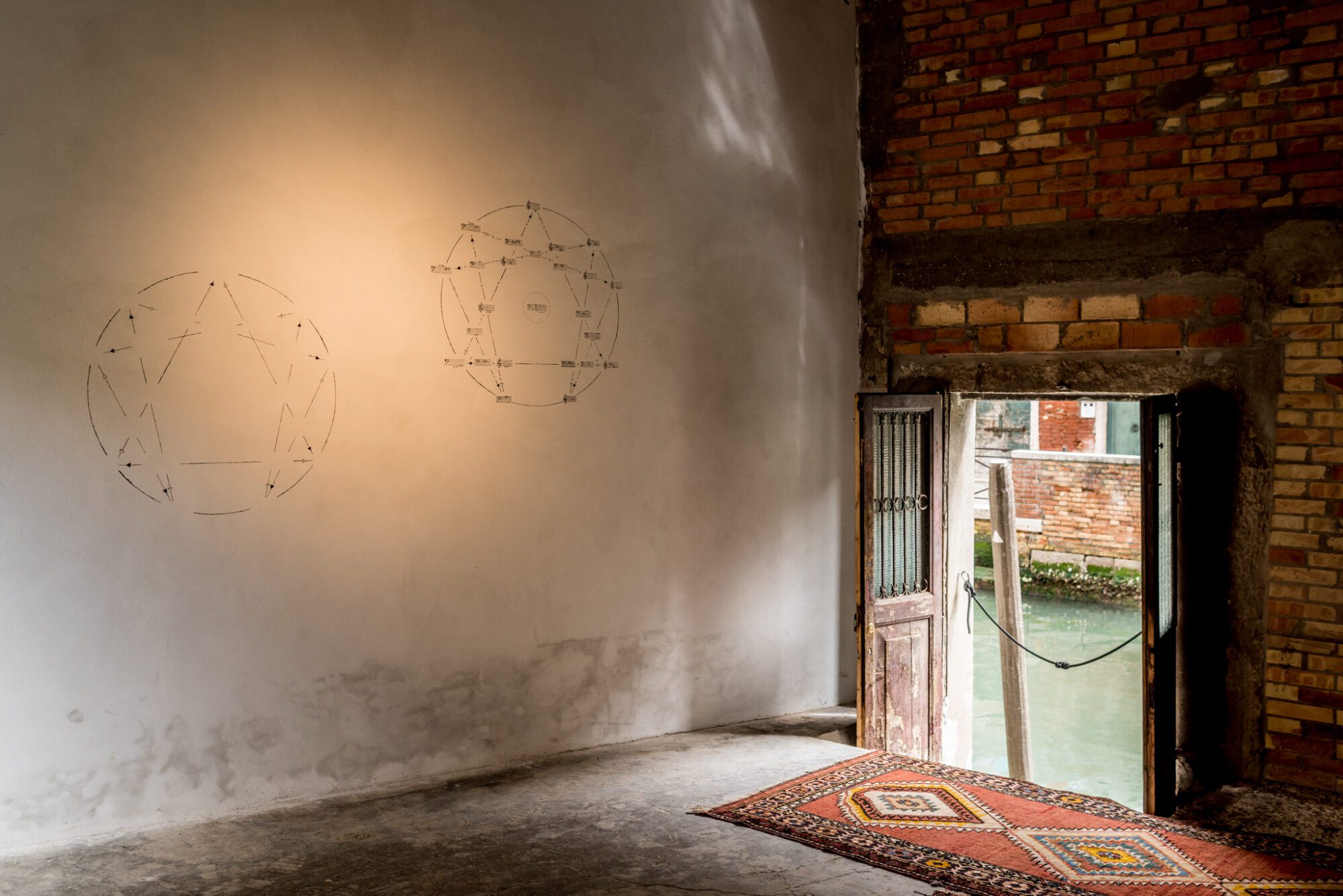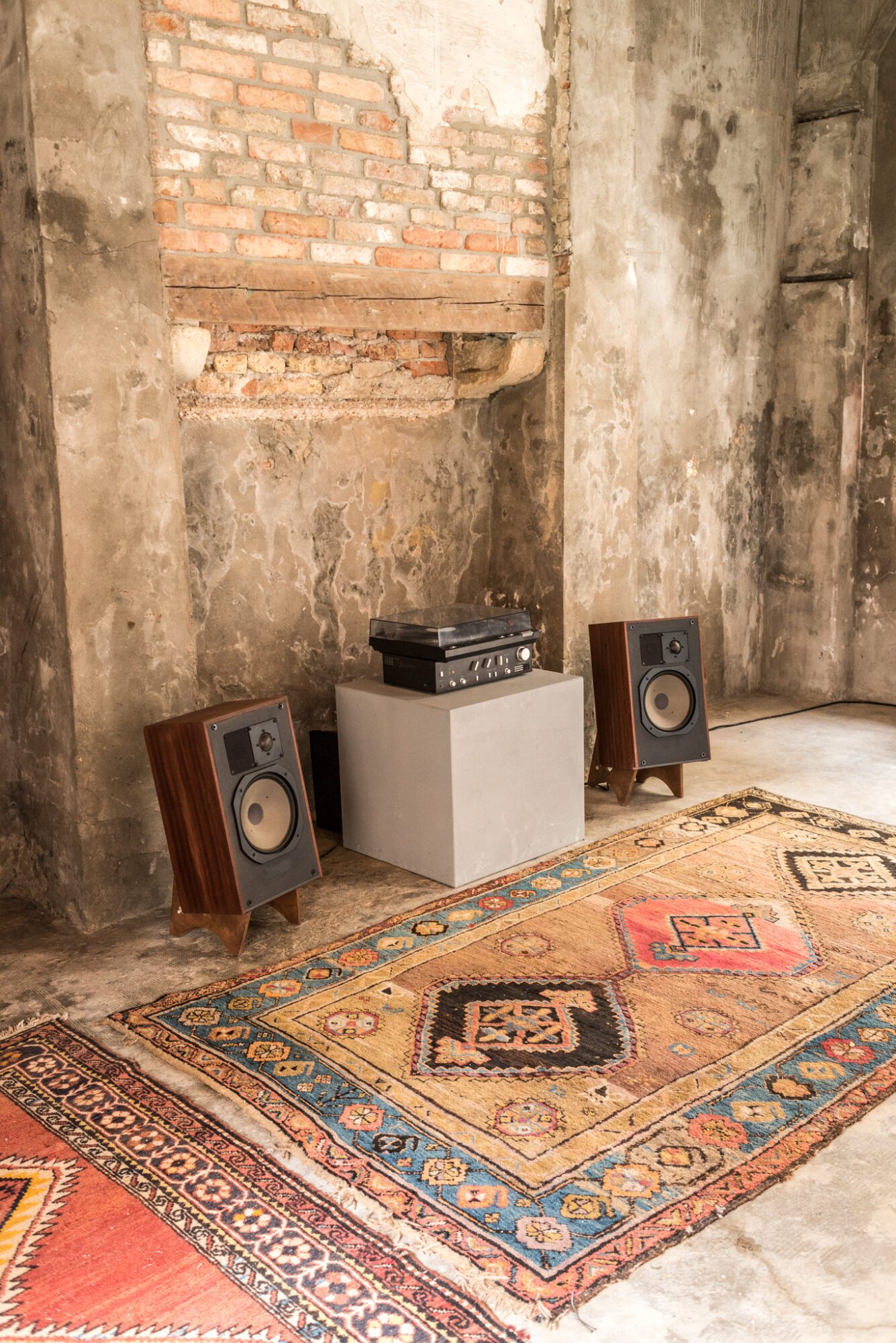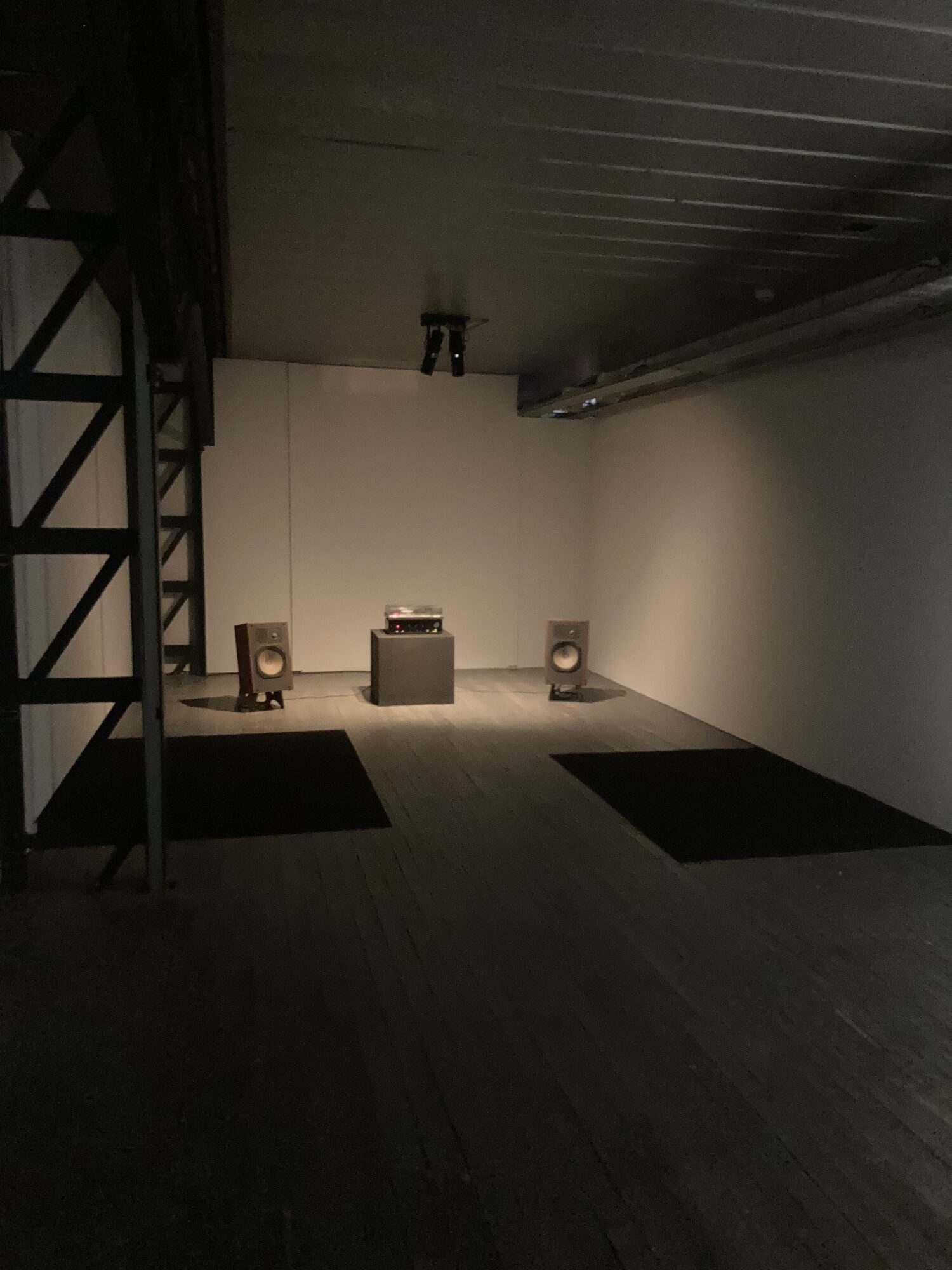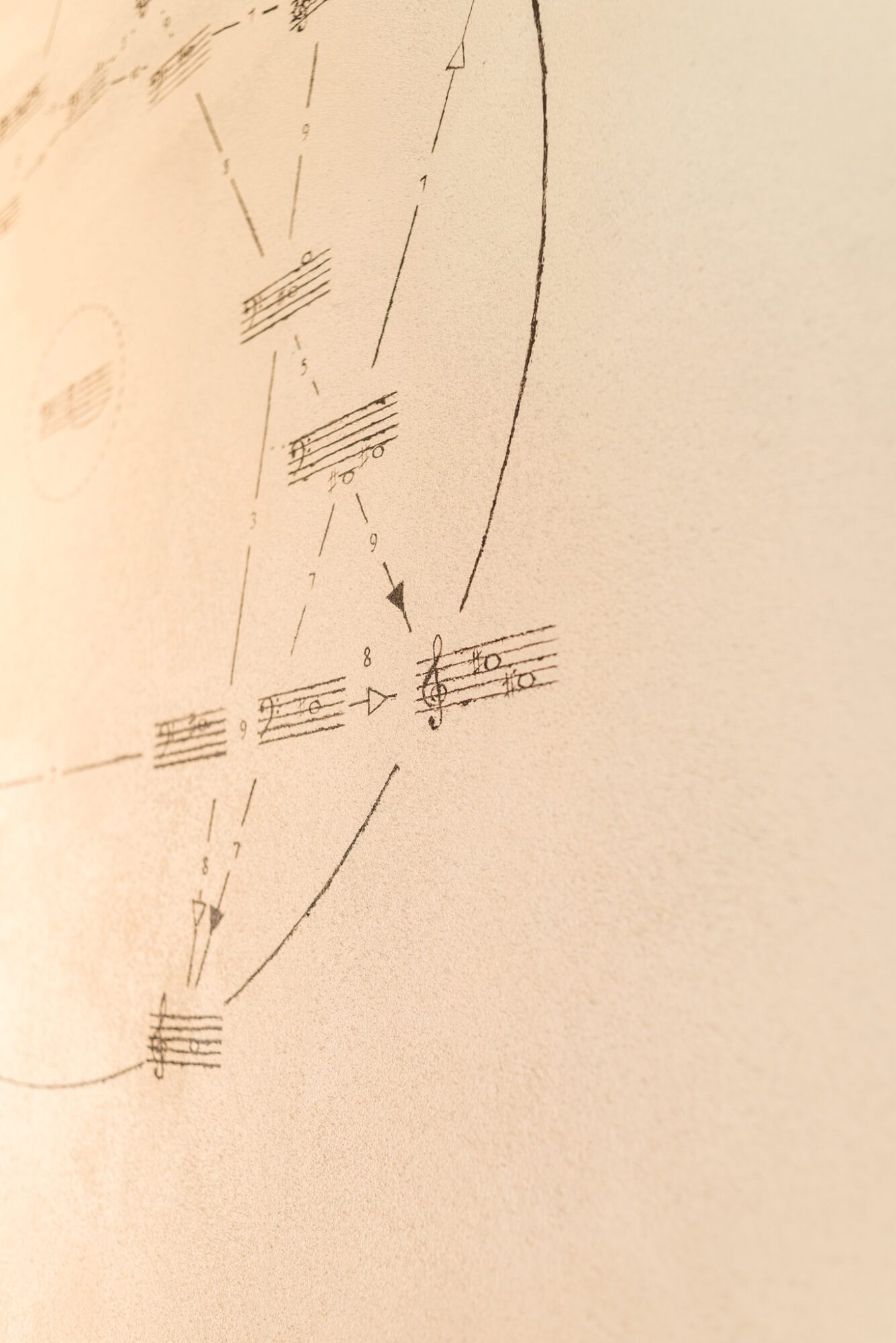 The 59th Venice Art Biennale, Armenia Pavilion, 2022
The 59th Venice Art Biennale, Armenia Pavilion, 2022 The 59th Venice Art Biennale, Armenia Pavilion, 2022
The 59th Venice Art Biennale, Armenia Pavilion, 2022 The 59th Venice Art Biennale, Armenia Pavilion, 2022
The 59th Venice Art Biennale, Armenia Pavilion, 2022
 Le Fresnoy and Centre Pompidou, Tourcoing
Le Fresnoy and Centre Pompidou, Tourcoing Le Fresnoy and Centre Pompidou, Tourcoing
Le Fresnoy and Centre Pompidou, Tourcoing The 59th Venice Art Biennale, Armenia Pavilion, 2022
The 59th Venice Art Biennale, Armenia Pavilion, 2022
Retuned grand piano, four hands, score, open duration, 2022
Vinyl player, custom-made speakers, enneagram fresco, 2022
Seven Common Ways of Disappearing is an installation and a performance, commissioned by the Armenia Pavilion, Venice Biennale 2022. It is a study of disappearance as an act of dissent, written in the form of a score for a retuned grand piano – the epitome of Western instrumental music.
The work is closely connected to the Armenian-Greek mystic and composer G.I. Gurdjieff who was one of the first thinkers (and quite possibly charlatans) to introduce a syncretic idea of Eastern philosophy into the West. Gurdjieff’s way of teaching was based on an esoteric blend of Middle Eastern, Buddhist, and Dervish philosophies oscillating between a genuine search for enlightenment and a complex form of trickery. While Gurdjieff wrote numerous books and musical scores, he stayed a rather enigmatic and conflicting figure among his contemporaries, which were both enchanted and confused by his constant fluctuation between mystical appearances, bizarre coincidences, and bouts of simultaneous drunkenness and sombreness.
Among many interests of his were digestive systems, heavenly harmonies, codified notions of “the Idiot”, ritualistic dances, search for the Truth, search for inebriation (both toxic and divine), ancient magic, and enchanting repetitive music. Gurdjieff was also the first person to introduce the idea of enneagram into the Western imagination (which later was appropriated widely by the New Age movement).
In Seven Common Ways of Disappearing, the enneagram is turned into a musical score. Dividing the circle into nine points and multiple intersections, the score is for two players and is open in duration. Using a simple set of rules, the two musicians navigate the score as a topographical device, moving according to the lines and directions they find themselves at. Thus, the piece renders differently each time, with nonetheless similar sound world.
In the installation, a record player is playing a hand-made vinyl through a set of custom-made speakers. The vinyl (which rewinds automatically) is a recording of the piece in two parts, Forwards and Backwards, etched into each side of the vinyl. The grand piano used in this recording has been retuned using a non-Western tuning system based on Gurdjieff’s writings and proposals on tuning and world-ordering. The musical score used to play and record the piece is frescoed on the adjacent wall.
Commissioned by Armenia Pavilion, Venice Biennale 2022 and Rewire festival The Hague. The artist-edition record was released through the Gharīb Pavilion, while a limited-release edition is available through the Hallow Ground label.